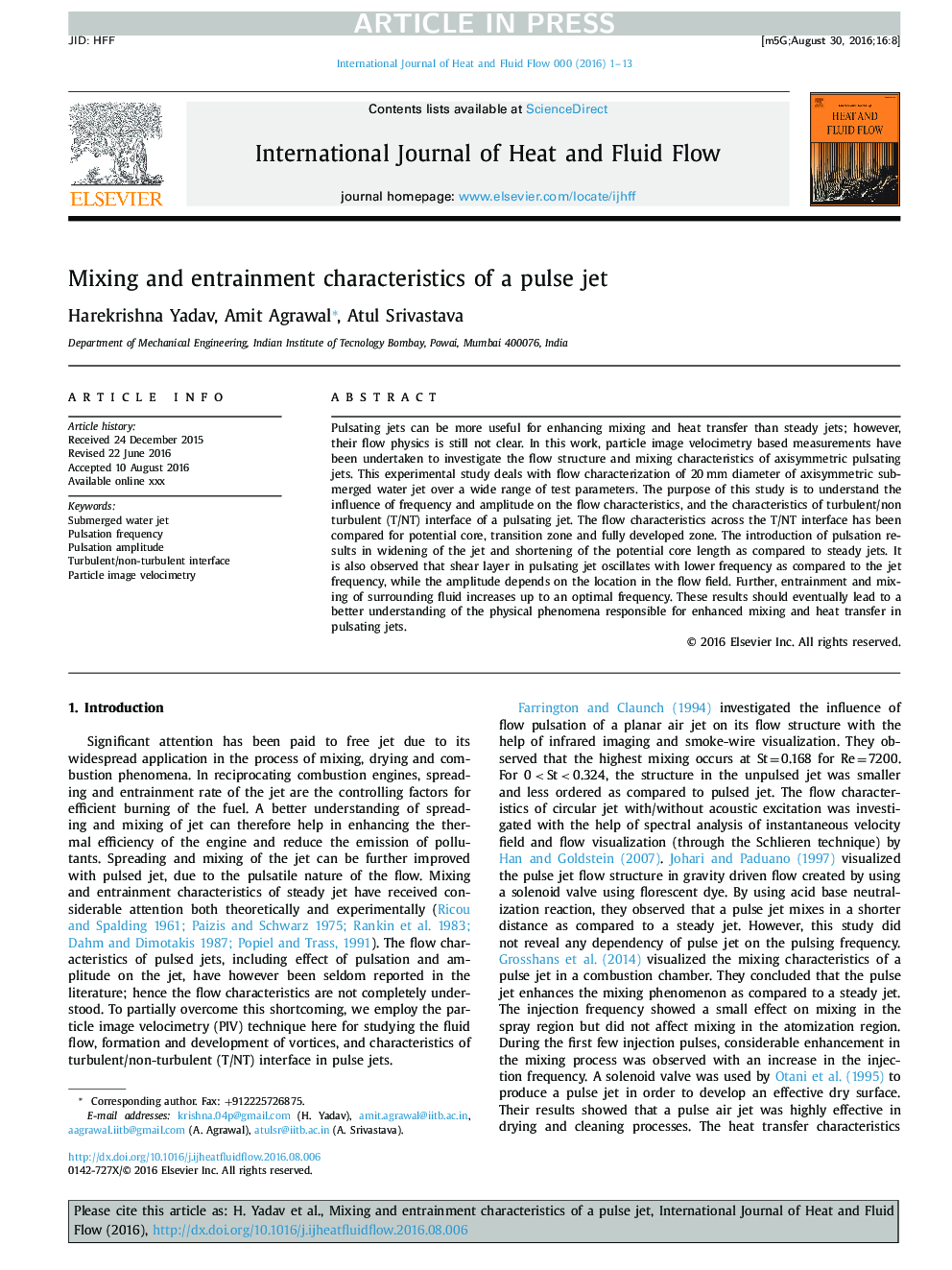| Article ID | Journal | Published Year | Pages | File Type |
|---|---|---|---|---|
| 4993369 | International Journal of Heat and Fluid Flow | 2016 | 13 Pages |
Abstract
Pulsating jets can be more useful for enhancing mixing and heat transfer than steady jets; however, their flow physics is still not clear. In this work, particle image velocimetry based measurements have been undertaken to investigate the flow structure and mixing characteristics of axisymmetric pulsating jets. This experimental study deals with flow characterization of 20Â mm diameter of axisymmetric submerged water jet over a wide range of test parameters. The purpose of this study is to understand the influence of frequency and amplitude on the flow characteristics, and the characteristics of turbulent/non turbulent (T/NT) interface of a pulsating jet. The flow characteristics across the T/NT interface has been compared for potential core, transition zone and fully developed zone. The introduction of pulsation results in widening of the jet and shortening of the potential core length as compared to steady jets. It is also observed that shear layer in pulsating jet oscillates with lower frequency as compared to the jet frequency, while the amplitude depends on the location in the flow field. Further, entrainment and mixing of surrounding fluid increases up to an optimal frequency. These results should eventually lead to a better understanding of the physical phenomena responsible for enhanced mixing and heat transfer in pulsating jets.
Related Topics
Physical Sciences and Engineering
Chemical Engineering
Fluid Flow and Transfer Processes
Authors
Harekrishna Yadav, Amit Agrawal, Atul Srivastava,
